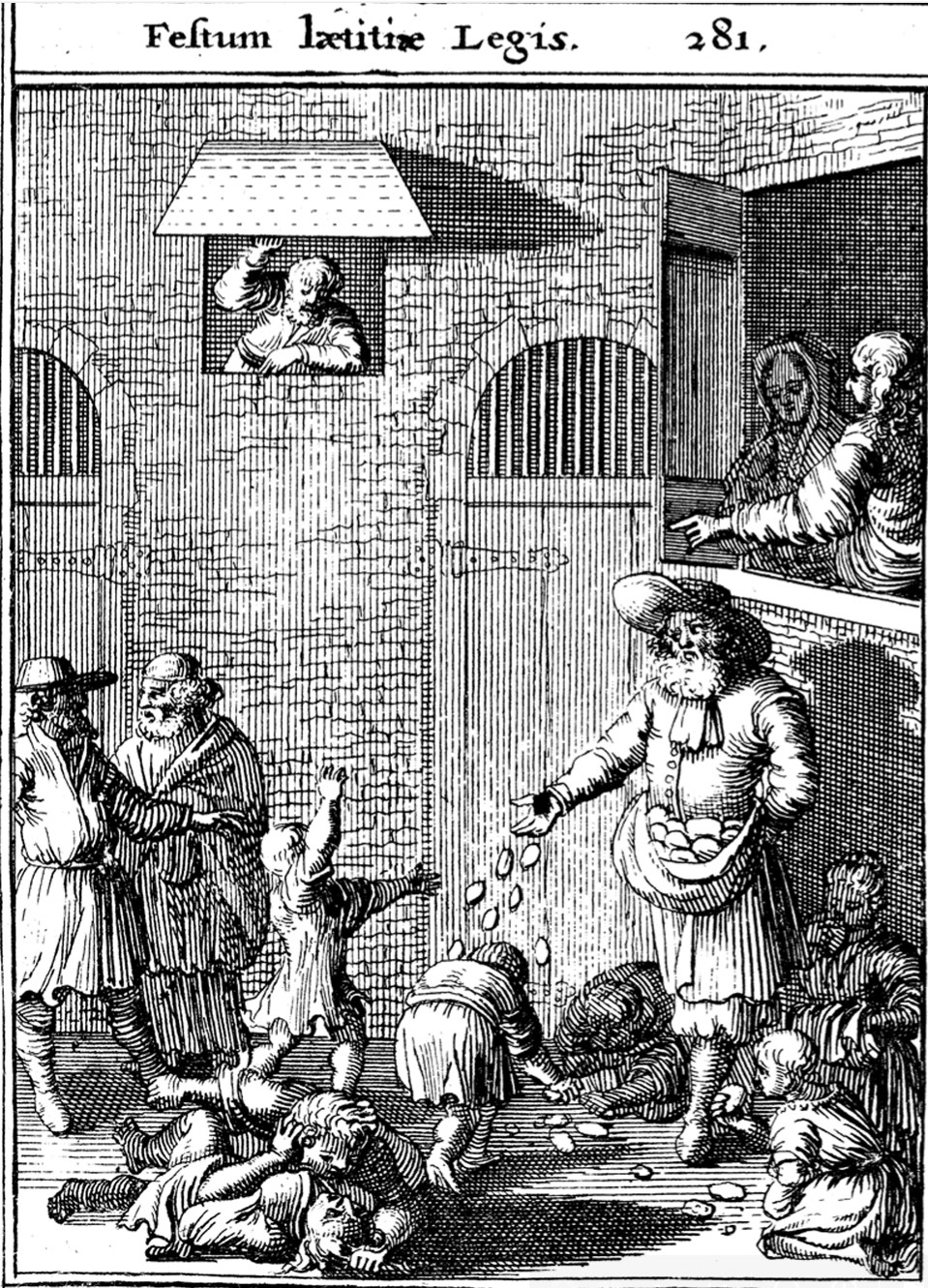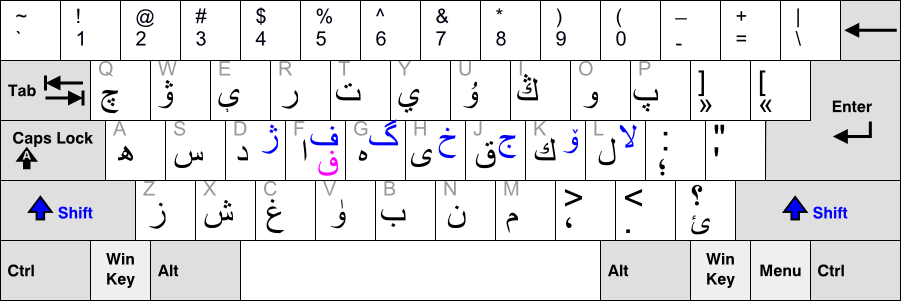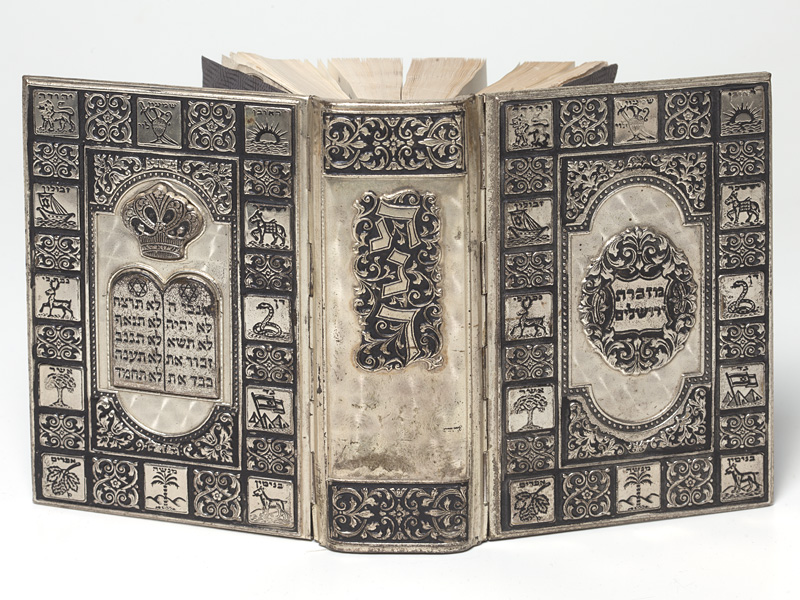|
Shemot (parsha)
Shemot, Shemoth, or Shemos (, 'names'; second and incipit word of the parashah) is the thirteenth weekly Torah portion (, ''parashah'') in the annual Jewish cycle of Torah reading and the first in the Book of Exodus. It constitutes Exodus 1:1–6:1. The parashah tells of the Israelites' affliction in Egypt, the hiding and rescuing of the infant Moses, Moses in Midian, the calling of Moses by , circumcision on the way, meeting the elders, and Moses before Pharaoh. It is made up of 6,762 Hebrew letters, 1,763 Hebrew words, 124 verses, and 215 lines in a Torah scroll. Jews read it on the thirteenth Sabbath after Simchat Torah, generally in late December or January. Readings In traditional Sabbath Torah reading, the parashah is divided into seven readings, or , '' aliyot''. In the Masoretic Text of the Tanakh (Hebrew Bible), Parashat Shemot has six "open portion" (, '' petuhah'') divisions (roughly equivalent to paragraphs, often abbreviated with the Hebrew letter ('' peh'')) ... [...More Info...] [...Related Items...] OR: [Wikipedia] [Google] [Baidu] |
Incipit
The incipit ( ) of a text is the first few words of the text, employed as an identifying label. In a musical composition, an incipit is an initial sequence of Musical note, notes, having the same purpose. The word ''incipit'' comes from Latin and means "it begins". Its counterpart taken from the ending of the text is the Explicit (text), explicit. Before the development of title (publishing), titles, texts were often referred to by their incipits, as with for example ''Agnus Dei (liturgy), Agnus Dei''. During the medieval period in Europe, incipits were often written in a different Typeface, script or colour from the rest of the work of which they were a part, and "incipit pages" might be heavily decorated with Illuminated manuscript, illumination. Though the word ''incipit'' is Latin, the practice of the incipit predates classical antiquity by several millennia and can be found in various parts of the world. Although not always called by the name of ''incipit'' today, the practi ... [...More Info...] [...Related Items...] OR: [Wikipedia] [Google] [Baidu] |
Simchat Torah
Simchat Torah (; Ashkenazi: ), also spelled Simhat Torah, is a Jewish holiday that celebrates and marks the conclusion of the annual cycle of public Torah readings, and the beginning of a new cycle. Simchat Torah is a component of the Hebrew Bible, Biblical Jewish holiday of ''Shemini Atzeret'' ("Eighth Day of Assembly"), which follows immediately after the festival of Sukkot in the month of Tishrei (occurring in September or October on the Gregorian calendar). Simchat Torah's main celebrations occur in the synagogue during evening and morning services. In many Orthodox Judaism, Orthodox as well as many Conservative Judaism, Conservative congregations, this is the only time of year on which the Sefer Torah, Torah scrolls are taken out of the Ark (synagogue), ark and read at ''night''. In the morning, the last ''parashah'' of Deuteronomy and the first ''parashah'' of Book of Genesis, Genesis are read in the synagogue. On each occasion, when the ark is opened, the worshippers leave t ... [...More Info...] [...Related Items...] OR: [Wikipedia] [Google] [Baidu] |
Jacob
Jacob, later known as Israel, is a Hebrew patriarch of the Abrahamic religions. He first appears in the Torah, where he is described in the Book of Genesis as a son of Isaac and Rebecca. Accordingly, alongside his older fraternal twin brother Esau, Jacob's paternal grandparents are Abraham and Sarah and his maternal grandfather is Bethuel, whose wife is not mentioned. He is said to have bought Esau's birthright and, with his mother's help, deceived his aging father to bless him instead of Esau. Then, following a severe drought in his homeland Canaan, Jacob and his descendants migrated to neighbouring Egypt through the efforts of his son Joseph, who had become a confidant of the pharaoh. After dying in Egypt at the age of 147, he is supposed to have been buried in the Cave of Machpelah in Hebron. Per the Hebrew Bible, Jacob's progeny were beget by four women: his wives (and maternal cousins) Leah and Rachel; and his concubines Bilhah and Zilpah. His sons were, in orde ... [...More Info...] [...Related Items...] OR: [Wikipedia] [Google] [Baidu] |
Tissot Pharaoh Notes The Importance Of The Jewish People
Tissot SA () is a Swiss luxury watch brand owned by the Swatch Group. The company was founded in Le Locle, Switzerland by Charles-Félicien Tissot and his son, Charles-Émile Tissot, in 1853. Tissot is not associated with Mathey-Tissot, another Swiss watchmaking firm. History Independent company Tissot was founded in 1853 by Charles-Félicien Tissot and his son Charles-Émile Tissot in the Swiss city of Le Locle, in the Neuchâtel canton of the Jura Mountains area. The father and son team worked as a casemaker (Charles-Félicien Tissot) and watchmaker (Charles-Emile). His son having expressed an interest in watchmaking from a young age. The two turned their house at the time into a small 'factory'. Charles-Emile Tissot left for Russia in 1858 and succeeded in selling their savonnette pocket watches across the Russian Empire. Russia became Tissot's greatest market, with the brand gaining popularity even in the Tsar's court; so Charles Tissot, Charles-Émile's son, moved to Mo ... [...More Info...] [...Related Items...] OR: [Wikipedia] [Google] [Baidu] |
1867 Edward Poynter - Israel In Egypt
There were only 354 days this year in the newly purchased territory of Alaska. When the territory transferred from the Russian Empire to the United States, the calendric transition from the Julian to the Gregorian Calendar was made with only 11 days instead of 12 during the 19th century. This change was made due to the territorial and geopolitical shift from the Asian to the American side of the International Date Line. Friday, 6 October 1867 ''(Julian Calendar)'' was followed by Friday again on 18 October 1867 (instead of Saturday, 19 October 1867 in the Gregorian Calendar). Events January * January 1 – The Covington–Cincinnati Suspension Bridge opens between Cincinnati, Ohio, and Covington, Kentucky, in the United States, becoming the longest single-span bridge in the world. It was renamed after its designer, John A. Roebling, in 1983. * January 8 – African-American men are granted the right to vote in the District of Columbia. * January 11 – Benito Juárez b ... [...More Info...] [...Related Items...] OR: [Wikipedia] [Google] [Baidu] |
ArtScroll
ArtScroll is an imprint of translations, books and commentaries from an Orthodox Jewish perspective published by Mesorah Publications, Ltd., a publishing company based in Rahway, New Jersey. Rabbi Nosson Scherman is the general editor. ArtScroll's first president, Rabbi Meir Zlotowitz (July 13, 1943 – June 24, 2017) was succeeded by his oldest son, Rabbi Gedaliah Zlotowitz, whose name is listed secondarily in new publications as general editor, after that of Rabbi Scherman. History In 1975, Rabbi Meir Zlotowitz, a graduate of Mesivtha Tifereth Jerusalem, was director of a high-end graphics studio in New York. The firm, ArtScroll Studios, produced ketubot, brochures, invitations, and awards. Rabbi Nosson Scherman, then principal of Yeshiva Karlin Stolin Boro Park, was approached by Zlotowitz who had helped him write copy for brochures and journals in the past, and they collaborated on a few projects. In late 1975, Zlotowitz wrote an English translation and commentary o ... [...More Info...] [...Related Items...] OR: [Wikipedia] [Google] [Baidu] |
Brooklyn
Brooklyn is a Boroughs of New York City, borough of New York City located at the westernmost end of Long Island in the New York (state), State of New York. Formerly an independent city, the borough is coextensive with Kings County, one of twelve original counties established under English rule in 1683 in what was then the Province of New York. As of the 2020 United States census, the population stood at 2,736,074, making it the most populous of the five boroughs of New York City, and the most populous Administrative divisions of New York (state)#County, county in the state.Table 2: Population, Land Area, and Population Density by County, New York State - 2020 New York State Department of Health. Accessed January 2, 2024. [...More Info...] [...Related Items...] OR: [Wikipedia] [Google] [Baidu] |
Samekh
Samekh or samech is the fifteenth Letter (alphabet), letter of the Semitic abjads, including Phoenician alphabet, Phoenician ''sāmek'' 𐤎, Hebrew alphabet, Hebrew ''sāmeḵ'' , Aramaic alphabet, Aramaic ''samek'' 𐡎, and Syriac alphabet, Syriac ''semkaṯ'' ܣ. Arabic script, Arabic sīn س represents samekh, but there is no surviving descendant of samekh in the arabic alphabet. However, it was present in the Nabataean alphabet, the Arabic alphabet's immediate predecessor, as the letter ''simkath'' , which was related to the Ancient North Arabian 𐪏 and Ancient South Arabian script, South Arabian . The gematria, numerical value of samekh is 60. Samekh represents a voiceless alveolar fricative . In the Hebrew language, the samekh has the same pronunciation as the left-dotted Shin (letter)#Hebrew shin/sin, shin . Origin The Phoenician letter may continue a glyph from the Middle Bronze Age alphabets, possibly based on a Egyptian hieroglyphs, hieroglyph for a tent ... [...More Info...] [...Related Items...] OR: [Wikipedia] [Google] [Baidu] |
Pe (Semitic Letter)
Pe is the seventeenth Letter (alphabet), letter of the Semitic abjads, including Arabic alphabet, Arabic ''fāʾ'' , Aramaic alphabet, Aramaic ''pē'' 𐡐, Hebrew alphabet, Hebrew ''pē'' , Phoenician alphabet, Phoenician ''pē'' 𐤐, and Syriac alphabet, Syriac ''pē'' ܦ. (in abjadi order). It is related to the Ancient North Arabian 𐪐, Ancient South Arabian script, South Arabian , and Geʽez script, Ge'ez . The original sound value is a voiceless bilabial plosive and it retains this value in most Semitic languages, except for Arabic, where the sound changed into the voiceless labiodental fricative , carrying with it the pronunciation of the letter. However, the sound in Arabic is used in loanwords with the letter ''pe (Persian letter), pe'' as an alternative. Under the Persian influence, many Arabic dialects in the Persian Gulf, as well as in Egyptian Arabic, Egypt and in some of the Maghreb under the Ottoman influence uses the letter ''pe'' to represent the sound wh ... [...More Info...] [...Related Items...] OR: [Wikipedia] [Google] [Baidu] |
Hebrew Bible
The Hebrew Bible or Tanakh (;"Tanach" . '' Random House Webster's Unabridged Dictionary''. ; ; or ), also known in Hebrew as (; ), is the canonical collection of scriptures, comprising the Torah (the five Books of Moses), the Nevi'im (the Books of the Prophets), and the [...More Info...] [...Related Items...] OR: [Wikipedia] [Google] [Baidu] |
Tanakh
The Hebrew Bible or Tanakh (;"Tanach" . ''''. ; ; or ), also known in Hebrew as (; ), is the canonical collection of scriptures, comprising the (the five Books of Moses), the |






